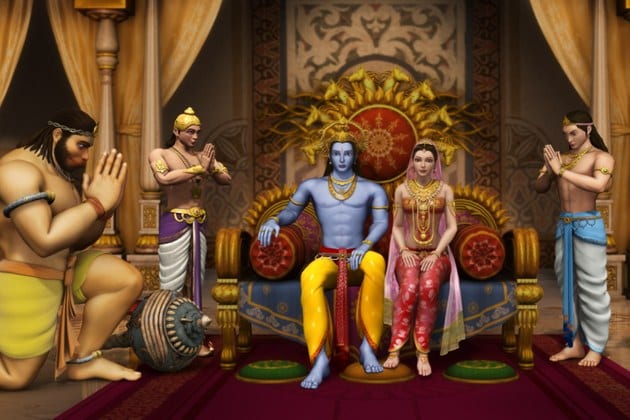
Some of the important adaptations of the classic tale include the 12th-century Tamil language Ramavataram, 14th-century Telugu language Sri Ranganatha Ramayanam, the Khmer Reamker, the Old Javanese Kakawin Ramayana, and the Thai Ramakien, the Lao Phra Lak Phra Lam, and the Burmese Yama Zatdaw. The original Valmiki version has been adapted or translated into various regional languages, which have often been marked more or less by plot twists and thematic adaptations. The Ramayana has spread to many Asian countries outside of India, including Burma, Indonesia, Cambodia, Laos, Philippines, Sri Lanka, Nepal, Thailand, Singapore, Malaysia, Japan, Mongolia, Vietnam and China. Narada passed on the knowledge to Valmiki, who authored Valmiki Ramayana, the present oldest available version of Ramayana. The oldest version is generally recognized to be the Sanskrit version attributed to the sage Narada, the Mula Ramayana. Though Rama has a streak of jealousy and possessiveness, especially when it comes to Sita (and even moreso in a later episode that is left out of this version of the epic), in general he is presented as the ideal hero and man.Rama (right), seated on the shoulders of Hanuman, battles the demon-king Ravana.ĭepending on the methods of counting, as many as three hundred versions of the Indian Hindu epic poem, the Ramayana, are known to exist. During the fight with Ravana, Rama behaves honorably by allowing Ravana time to recover from fainting spells, and even doubts the legitimacy and righteousness of his victory when he notices an injury on Ravana's back and fears that he inflicted it while Ravana fled. When Ravana kidnaps Sita, Rama works closely with the monkeys of Kiskinda to rescue her.

Rama retreats to the forests with Sita and his brother, Lakshmana, for 14 years, during which time Rama battles demons and rakshasas. Though every citizen of Kosala wants Rama to be king, Rama demonstrates his intense loyalty and honor when he insists that Dasaratha uphold his promise to Kaikeyi, one of his wives, and crown Rama's brother, Bharatha, king instead.

Rama uses this strength to string Shiva's bow and win Sita's hand in marriage. He's exceptionally strong and skilled in battle, which is also an early clue to those around him that he's an incarnation of Vishnu. Because of this, Rama's true identity is identifiable by his desire to rid the world of evil. Though in this story Rama is a human, he's actually an avatar of the god Vishnu, who decided to take a human form in order to kill the evil rakshasa (demon) Ravana. Rama is the titular protagonist and the first son of King Dasaratha.


 0 kommentar(er)
0 kommentar(er)
